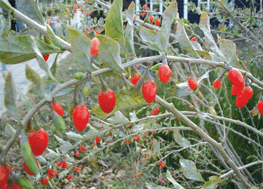Mice drinking goji berry juice (Lycium barbarum) are protected from UV radiation-induced skin damage viaantioxidant pathways
Abstract
The goji berry,

- This article is part of the themed collection: Topical and systemic photoprotection
* Corresponding authors
a
Faculty of Veterinary Science, University of Sydney, Sydney, NSW, Australia
E-mail:
vreeve@usyd.edu.au
Fax: +61 2 9351 7348
Tel: +61 2 9351 2084
The goji berry,

 Please wait while we load your content...
Something went wrong. Try again?
Please wait while we load your content...
Something went wrong. Try again?
V. E. Reeve, M. Allanson, S. J. Arun, D. Domanski and N. Painter, Photochem. Photobiol. Sci., 2010, 9, 601 DOI: 10.1039/B9PP00177H
To request permission to reproduce material from this article, please go to the Copyright Clearance Center request page.
If you are an author contributing to an RSC publication, you do not need to request permission provided correct acknowledgement is given.
If you are the author of this article, you do not need to request permission to reproduce figures and diagrams provided correct acknowledgement is given. If you want to reproduce the whole article in a third-party publication (excluding your thesis/dissertation for which permission is not required) please go to the Copyright Clearance Center request page.
Read more about how to correctly acknowledge RSC content.
 Fetching data from CrossRef.
Fetching data from CrossRef.
This may take some time to load.
Loading related content
